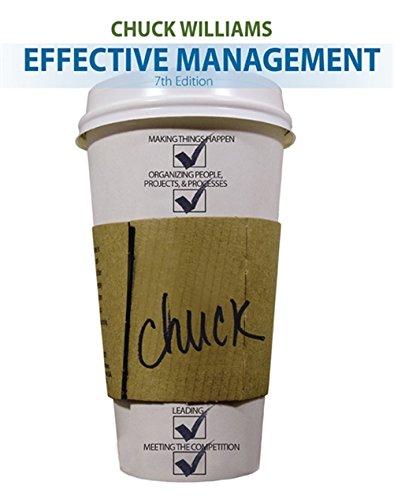Question
Part A. Chapter 12 Managing Inventories A small hospital purchases units of red blood from a local blood collection agency. The hospital uses 2,000 units
Part A. Chapter 12 Managing Inventories A small hospital purchases units of red blood from a local blood collection agency. The hospital uses 2,000 units monthly and pays $227.45 per unit. The cost per order is $145.00. The cost of capital is 11% and the handling and storage costs are 9% of the item cost. [Tip: *** There is an Excel Template provided under the CONTENT tab to help solve this question. Also Solved Problems 11.2 & 11.3 in the textbook provide additional insights.] 1. Determine the EOQ and the total annual inventory cost. 2. The blood collection agency provides a $2,000 rebate/year for customers that order a minimum of 750 units for each order. Determine how much the hospital would save or lose each year if it accepted the suppliers offer. 3. The hospital operates 365 days per year and the lead time to order blood is 3 weeks. Determine the reorder point and the average time between orders in days. 4. The hospital is concerned with fluctuating demand and would like to maintain safety stock with a 95% service level. If the historical standard deviation of weekly demand is 160 units, what should the new reorder point be? Part B. Chapter 14 Resource Management David Christopher is an orthopedic surgeon, who specializes in three types of surgeryhip, knee, and ankle replacements. The surgery mix is 40 percent hip replacement, 50 percent knee replacement, and 10 percent ankle replacement. Partial bills of materials for each type of surgery are shown in the following information. Hip Replacement Knee Replacement Ankle Replacement Surgical kits #203 & #428 Surgical kit #203 Surgical kit #108 Hip part package #A Knee part package #V Ankle part package #P Patient's blood type6 pints Patient's blood type4 pints Patient's blood type3 pints a. Given that Dr. Christopher is scheduled to do 5 hip replacements, 3 knee replacements, and 1 ankle replacement next week, how many surgical kits and part packages of each type should the hospital have available next week? b. How many total pints of blood are needed for next week? c. Design a "mistake-proof" system to ensure each patient gets the correct blood type. d. What are the implications of a shortage (stockout) of a surgical kit or part package discovered several hours before the operation? What if a part package has a missing part that is not discovered until surgery begins?
Step by Step Solution
There are 3 Steps involved in it
Step: 1

Get Instant Access to Expert-Tailored Solutions
See step-by-step solutions with expert insights and AI powered tools for academic success
Step: 2

Step: 3

Ace Your Homework with AI
Get the answers you need in no time with our AI-driven, step-by-step assistance
Get Started


